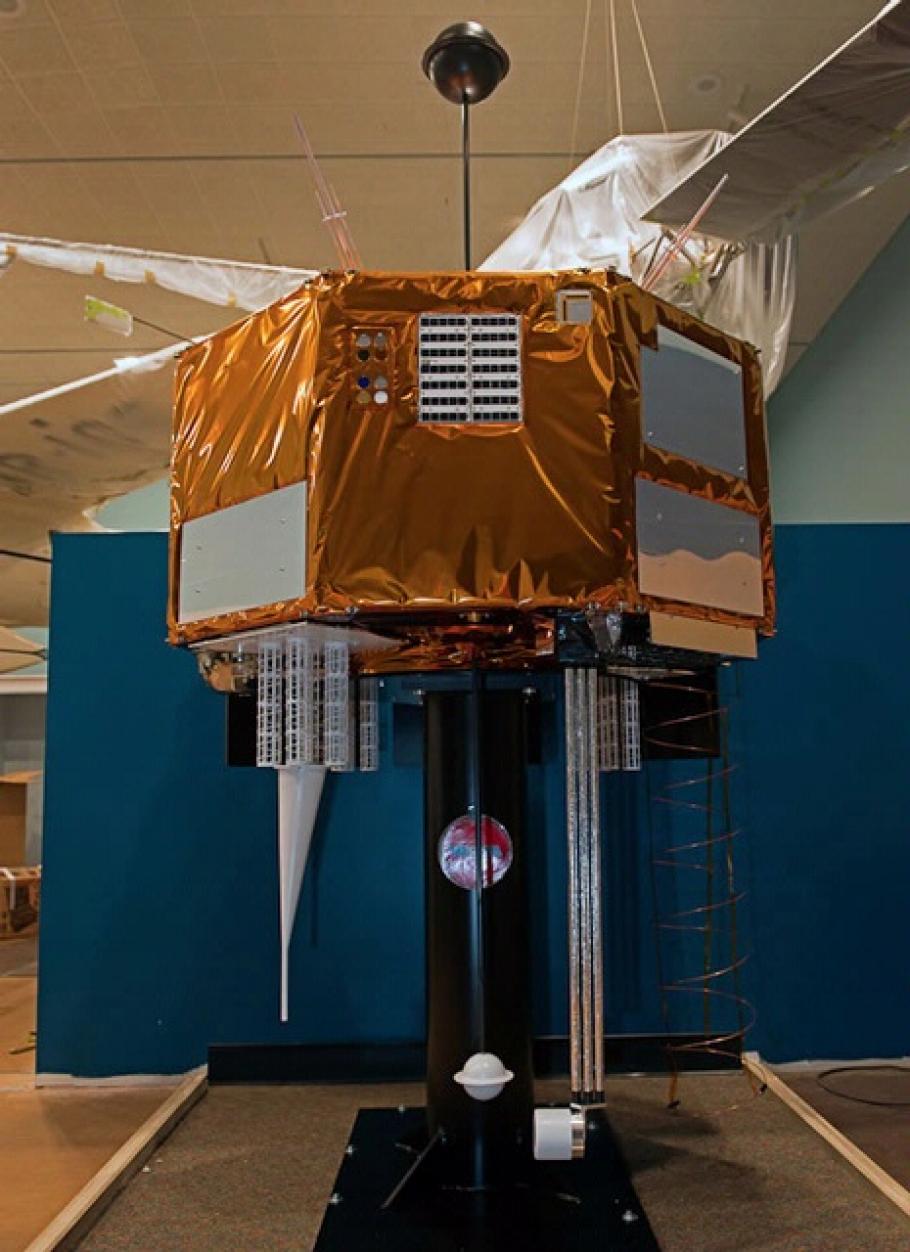Preparation of the upcoming Time and Navigation exhibition is in full swing, and objects are being installed in cases throughout the gallery. In fact, the gallery became a little more shiny just in time for the holiday season thanks to a delivery from our friends at the Naval Research Laboratory. The object they contributed is a restored engineering model of the NTS-2 satellite. Now, you may be asking, “What is an NTS-2 satellite, besides a shiny box?” Well, the NTS-2 satellite led a revolution in navigation technology, and can be considered the grandfather of all the satellites which currently help you find your way around town. The NTS-2 satellite is the descendent of a naval research program known as TIMATION (TIMe/navigATION). The program began in the early 1960s, and tested the possibility of launching highly accurate clocks into space within satellites. The clocks on board the NTS-2 satellite worked by measuring the “tick” of cesium atoms. The cesium atoms vibrated more than nine billion times per second, acting like a super accurate clock. These clocks could then broadcast that time from space, and people on Earth could receive these signals to help them locate themselves on the planet. In 1973, the TIMATION program was combined with other military programs to form the NAVSTAR Global Positioning System (GPS). After successfully launching the NTS-1 satellite in the summer of 1974, NTS-2 was launched on June 23, 1977, forever changing how we navigate on Earth. The two satellites demonstrated the feasibility of using super accurate atomic clocks aboard satellites, and became the basis of the GPS network that your smartphone may use on a daily basis. The restored engineering model looks very much like the one that went into space on that historic day in 1977. The Naval Research Laboratory did a great job restoring it and installing it in the gallery. We hope you will come and visit it when the exhibition opens in March of 2013!
